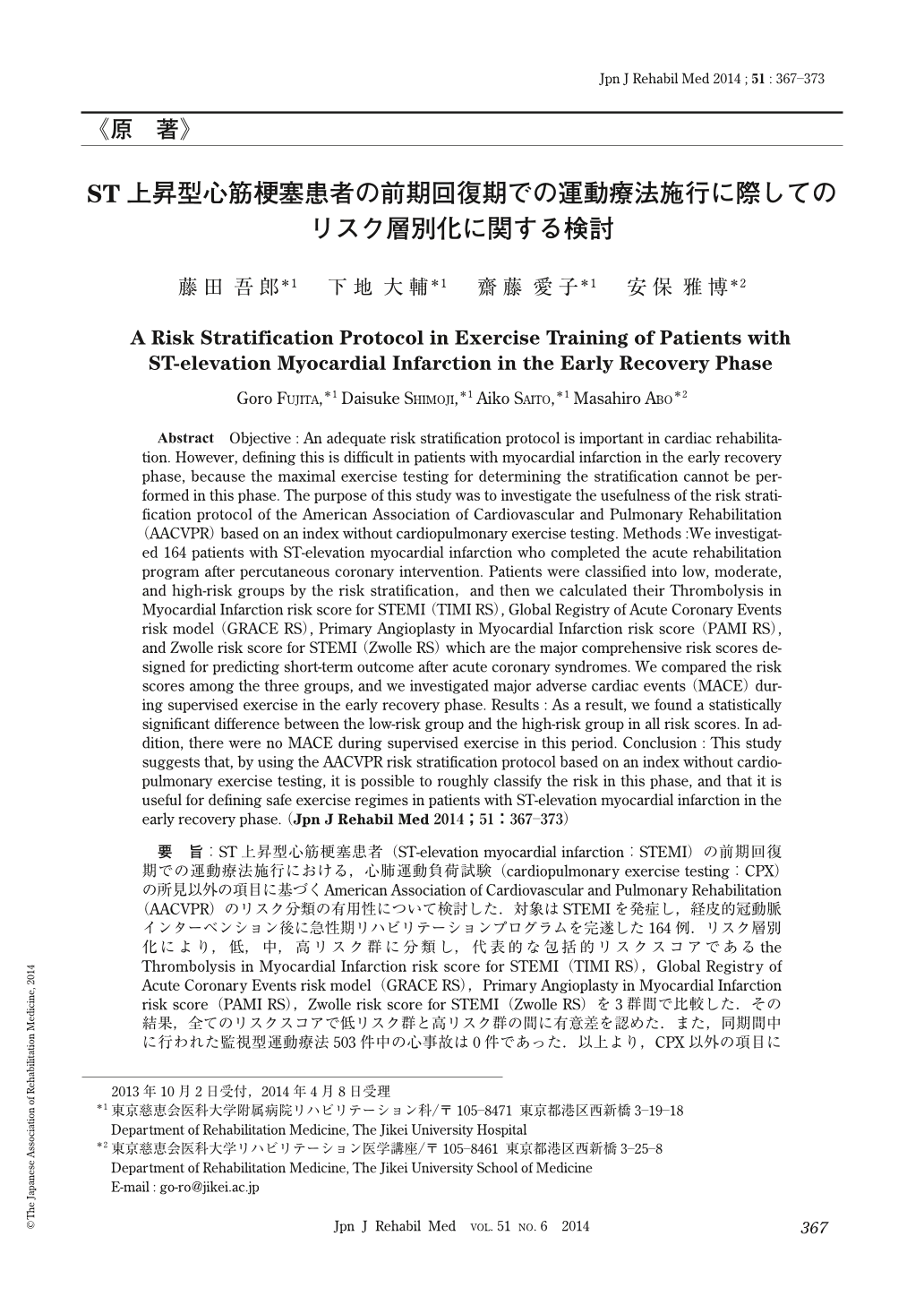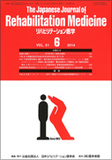Japanese
English
- 販売していません
- Abstract 文献概要
- 1ページ目 Look Inside
- 参考文献 Reference
要旨:ST上昇型心筋梗塞患者(ST-elevation myocardial infarction:STEMI)の前期回復期での運動療法施行における,心肺運動負荷試験(cardiopulmonary exercise testing:CPX)の所見以外の項目に基づくAmerican Association of Cardiovascular and Pulmonary Rehabilitation(AACVPR)のリスク分類の有用性について検討した.対象はSTEMIを発症し,経皮的冠動脈インターベンション後に急性期リハビリテーションプログラムを完遂した164例.リスク層別化により,低,中,高リスク群に分類し,代表的な包括的リスクスコアであるthe Thrombolysis in Myocardial Infarction risk score for STEMI(TIMI RS),Global Registry of Acute Coronary Events risk model(GRACE RS),Primary Angioplasty in Myocardial Infarction risk score(PAMI RS),Zwolle risk score for STEMI(Zwolle RS)を3群間で比較した.その結果,全てのリスクスコアで低リスク群と高リスク群の間に有意差を認めた.また,同期間中に行われた監視型運動療法503件中の心事故は0件であった.以上より,CPX以外の項目によるAACVPRのリスク層別化基準は,この時期のリスクを大別することが可能であり,リスクマネジメント指標として有用であることが示唆された.
Abstract Objective : An adequate risk stratification protocol is important in cardiac rehabilitation. However, defining this is difficult in patients with myocardial infarction in the early recovery phase, because the maximal exercise testing for determining the stratification cannot be performed in this phase. The purpose of this study was to investigate the usefulness of the risk stratification protocol of the American Association of Cardiovascular and Pulmonary Rehabilitation (AACVPR) based on an index without cardiopulmonary exercise testing. Methods :We investigated 164 patients with ST-elevation myocardial infarction who completed the acute rehabilitation program after percutaneous coronary intervention. Patients were classified into low, moderate, and high-risk groups by the risk stratification,and then we calculated their Thrombolysis in Myocardial Infarction risk score for STEMI (TIMI RS), Global Registry of Acute Coronary Events risk model (GRACE RS), Primary Angioplasty in Myocardial Infarction risk score (PAMI RS), and Zwolle risk score for STEMI (Zwolle RS) which are the major comprehensive risk scores designed for predicting short-term outcome after acute coronary syndromes. We compared the risk scores among the three groups, and we investigated major adverse cardiac events (MACE) during supervised exercise in the early recovery phase. Results : As a result, we found a statistically significant difference between the low-risk group and the high-risk group in all risk scores. In addition, there were no MACE during supervised exercise in this period. Conclusion : This study suggests that, by using the AACVPR risk stratification protocol based on an index without cardiopulmonary exercise testing, it is possible to roughly classify the risk in this phase, and that it is useful for defining safe exercise regimes in patients with ST-elevation myocardial infarction in the early recovery phase.

Copyright © 2014, The Japanese Association of Rehabilitation Medicine. All rights reserved.


